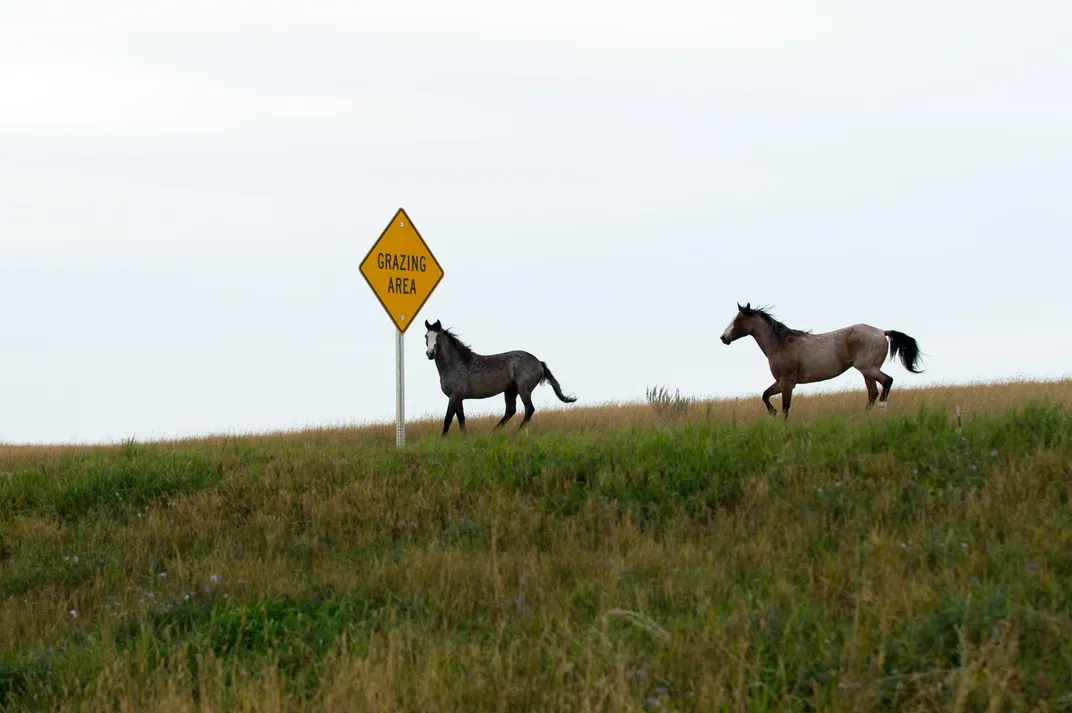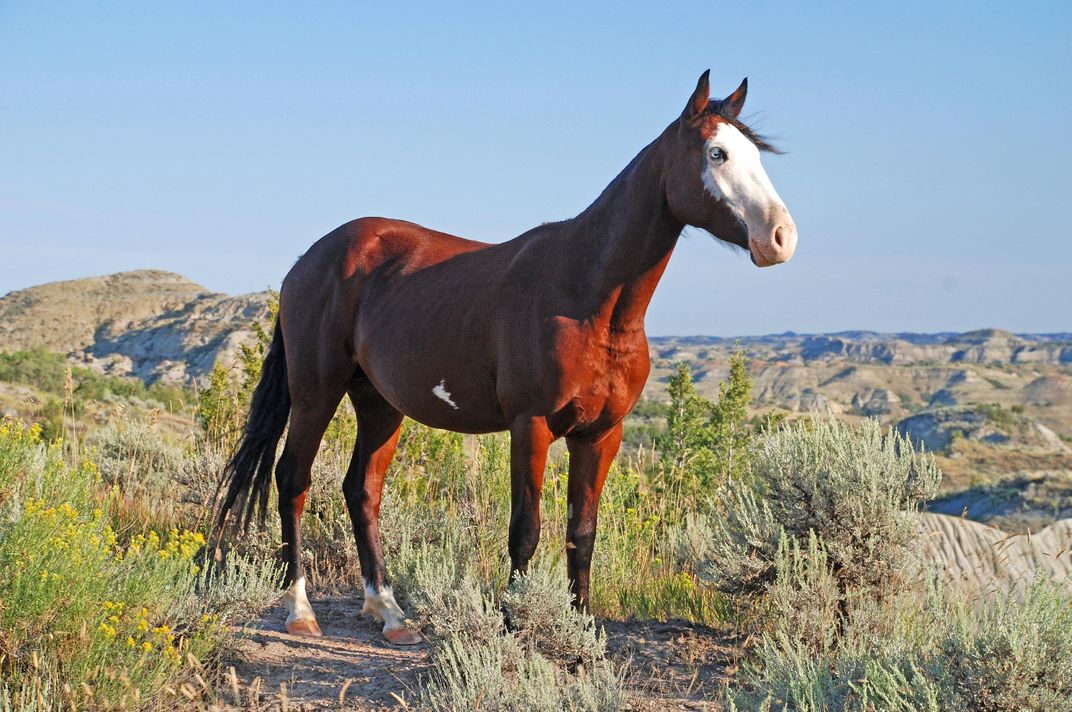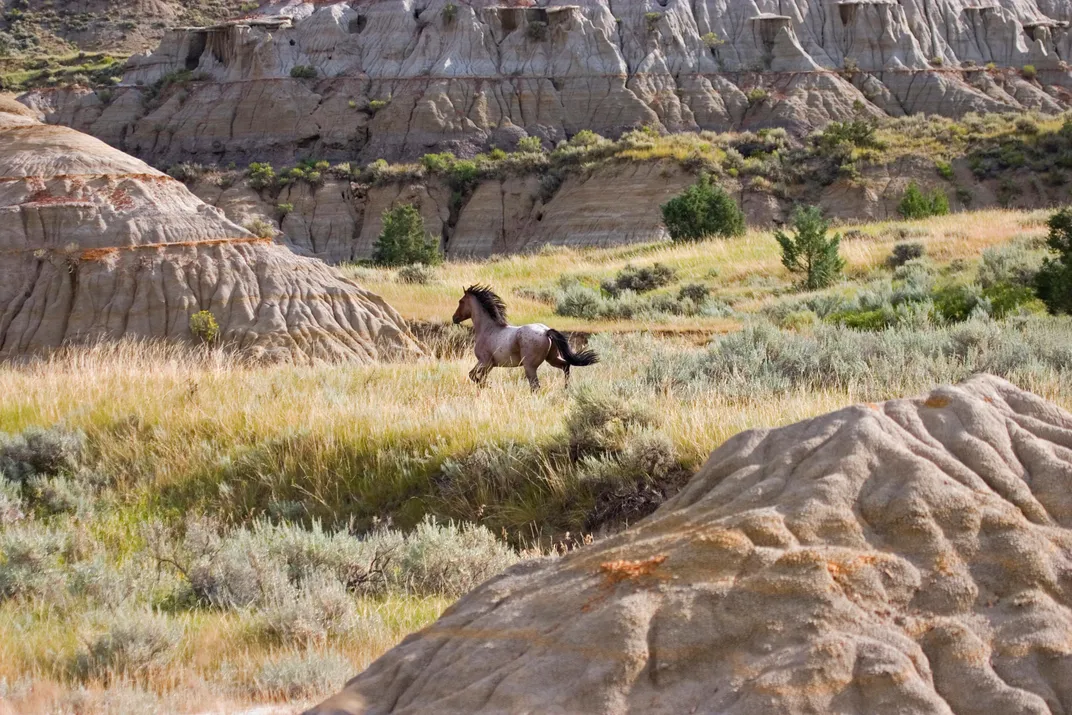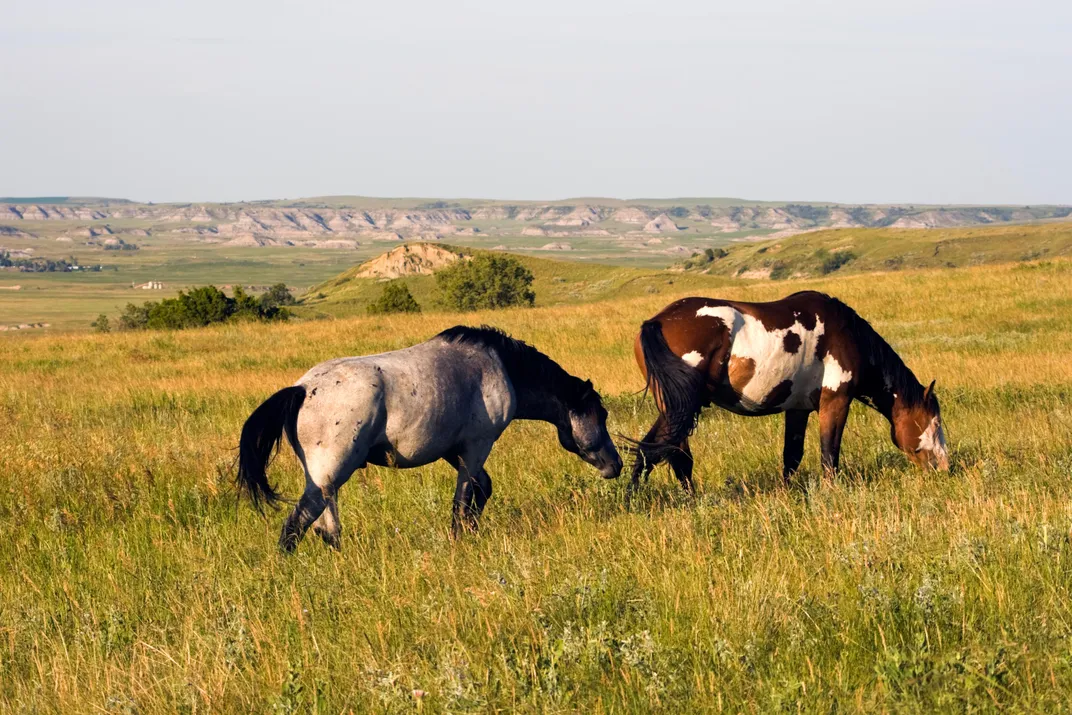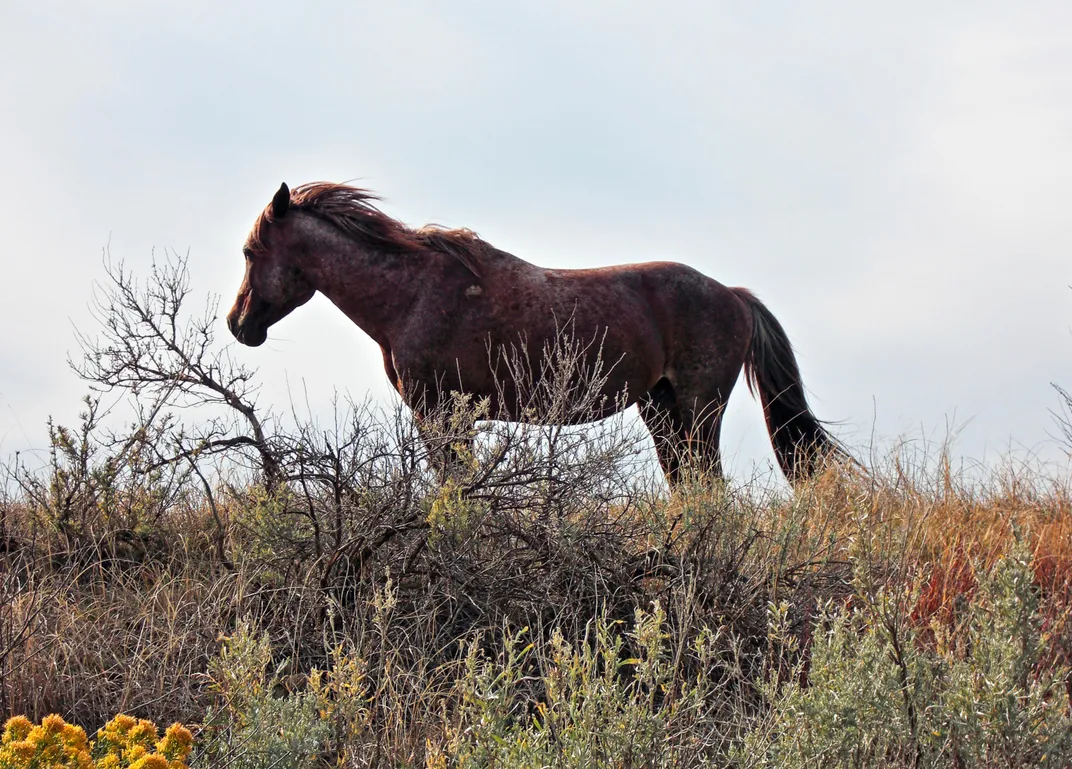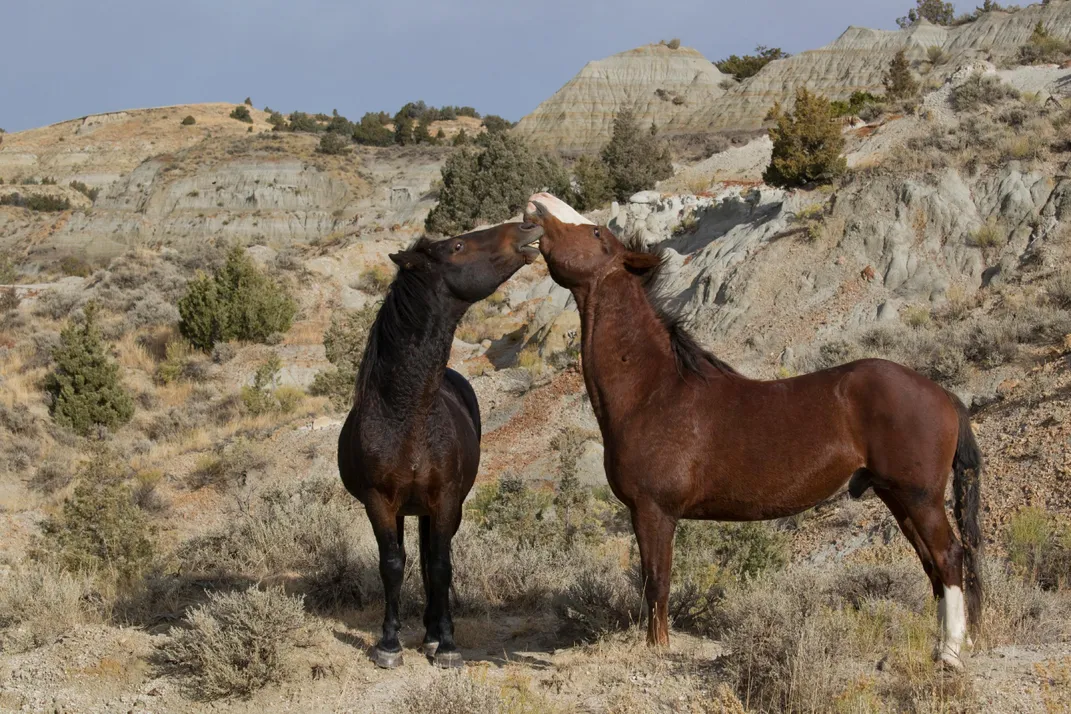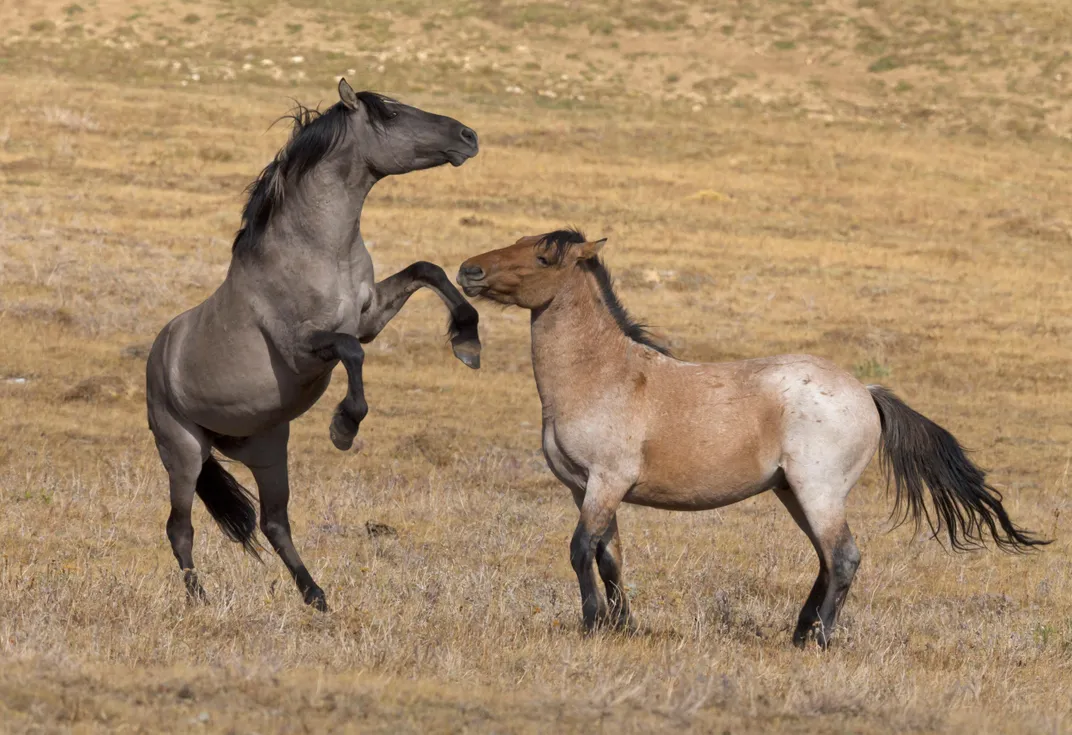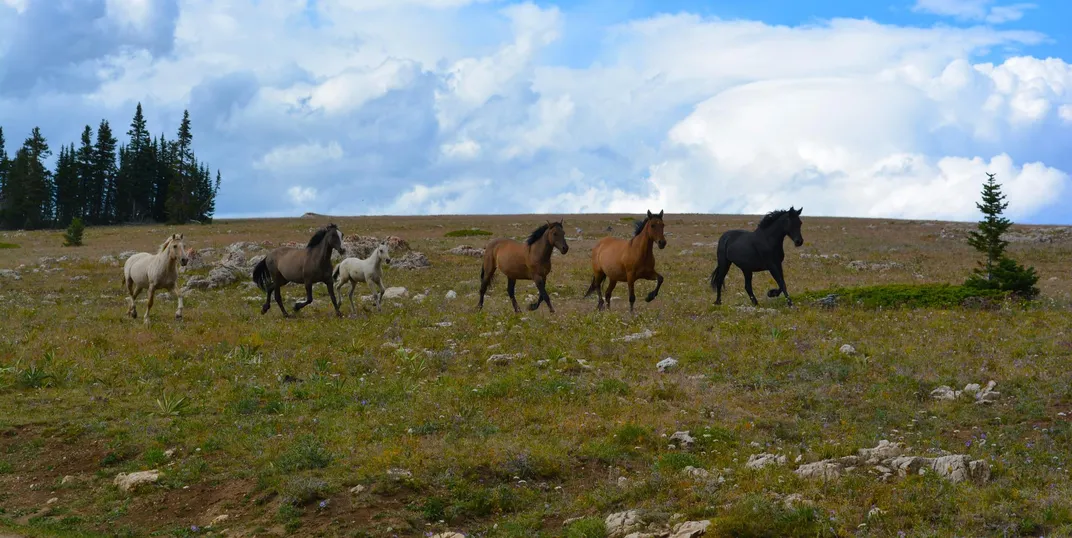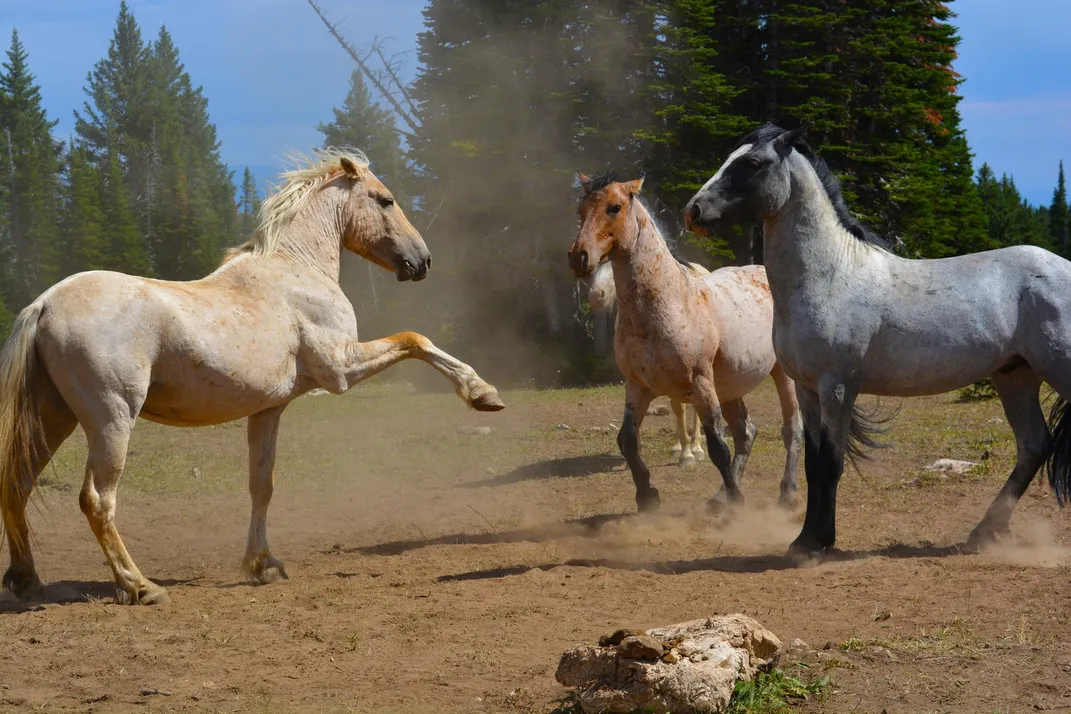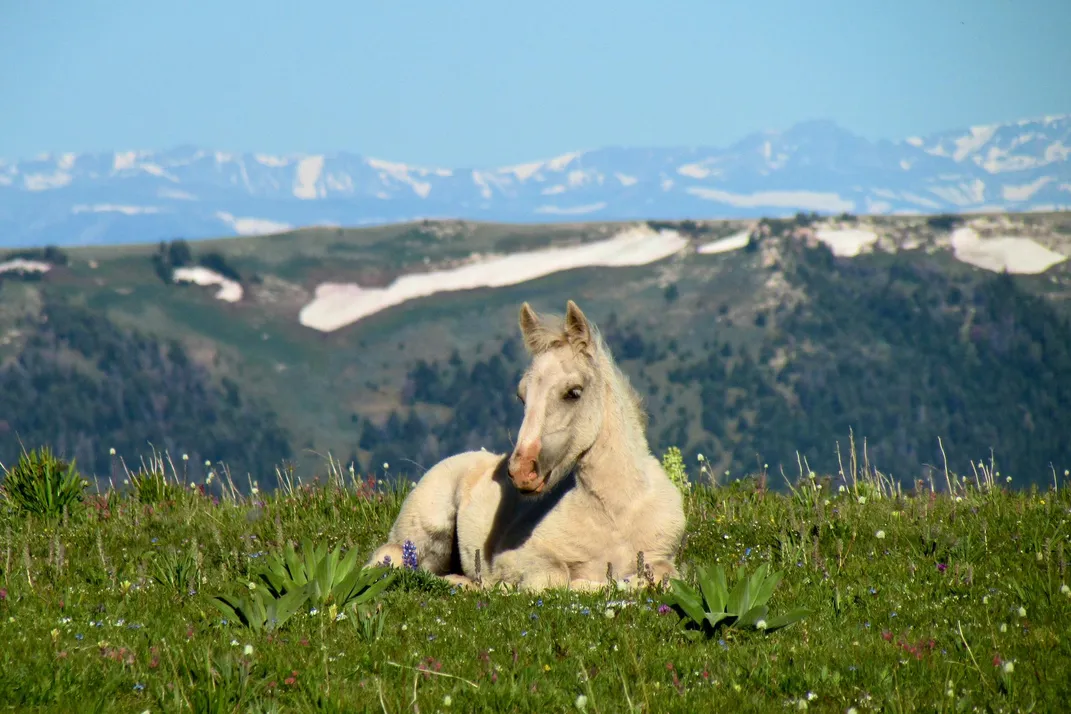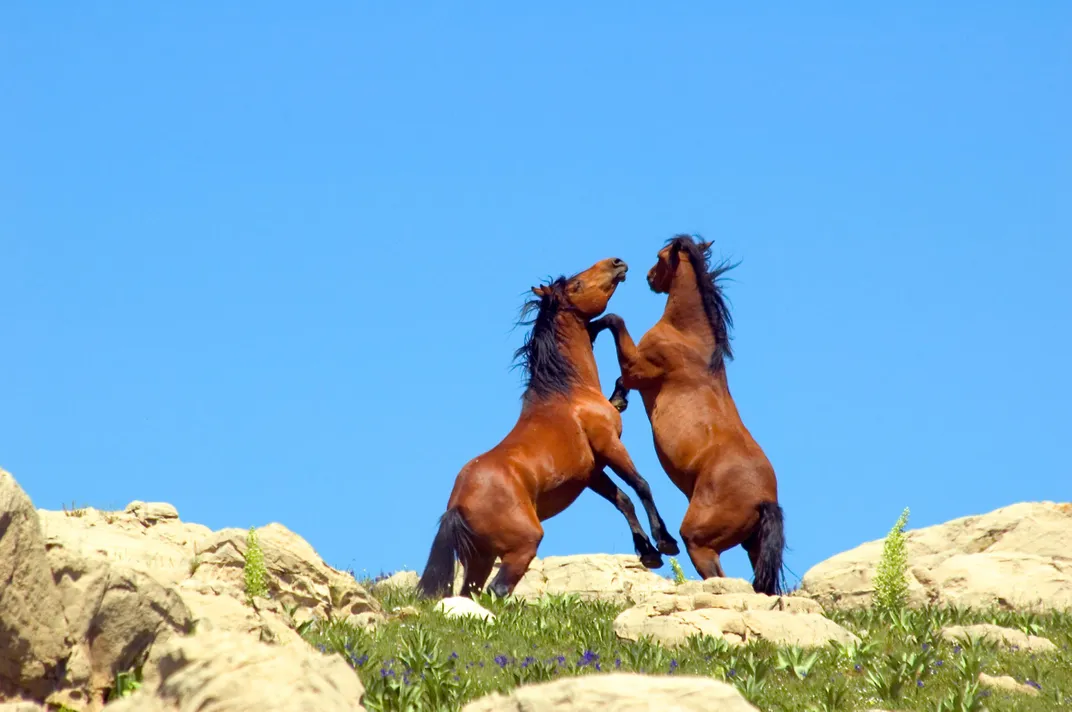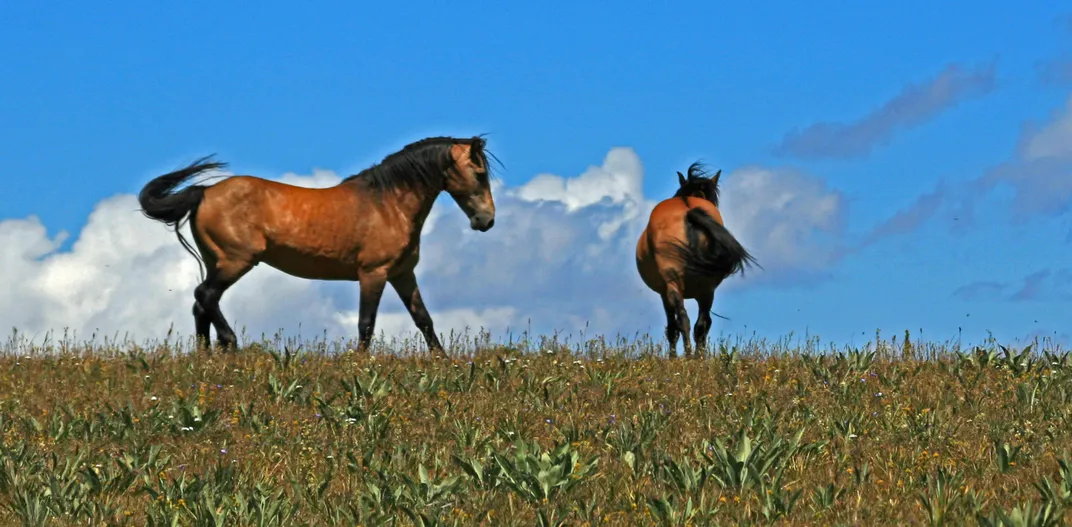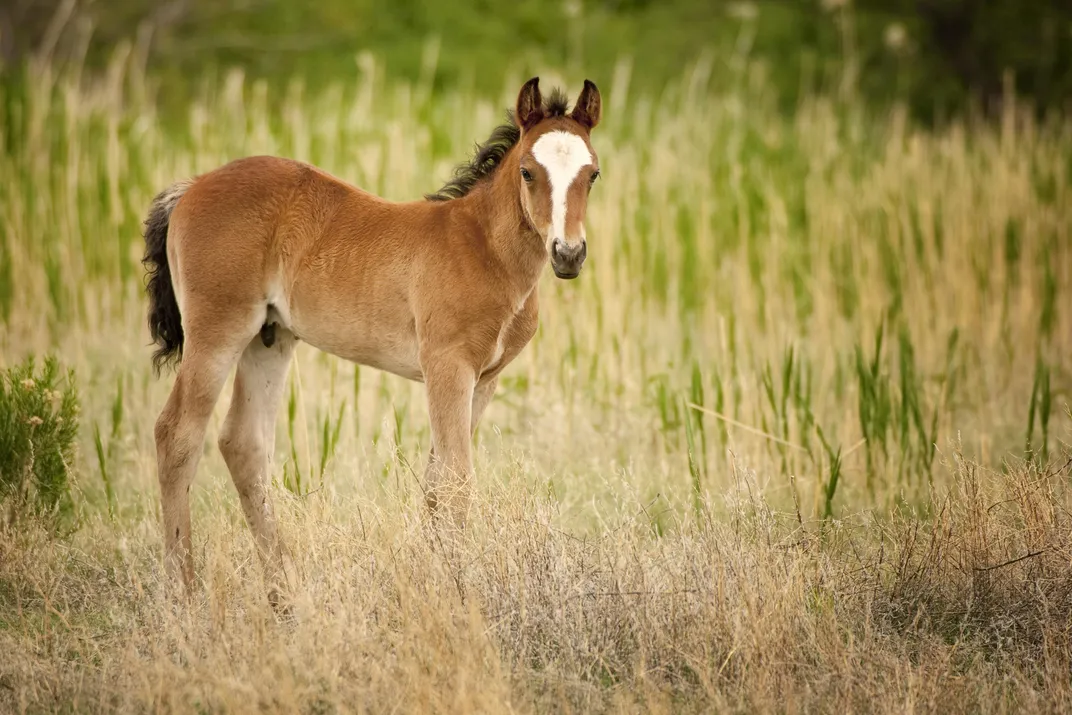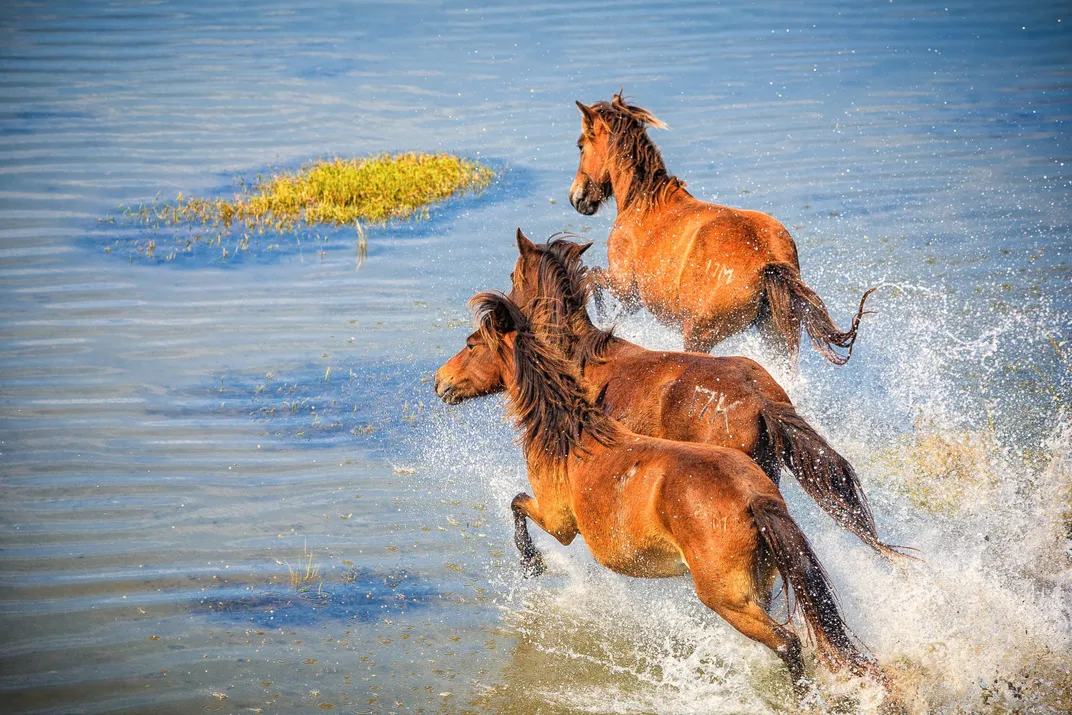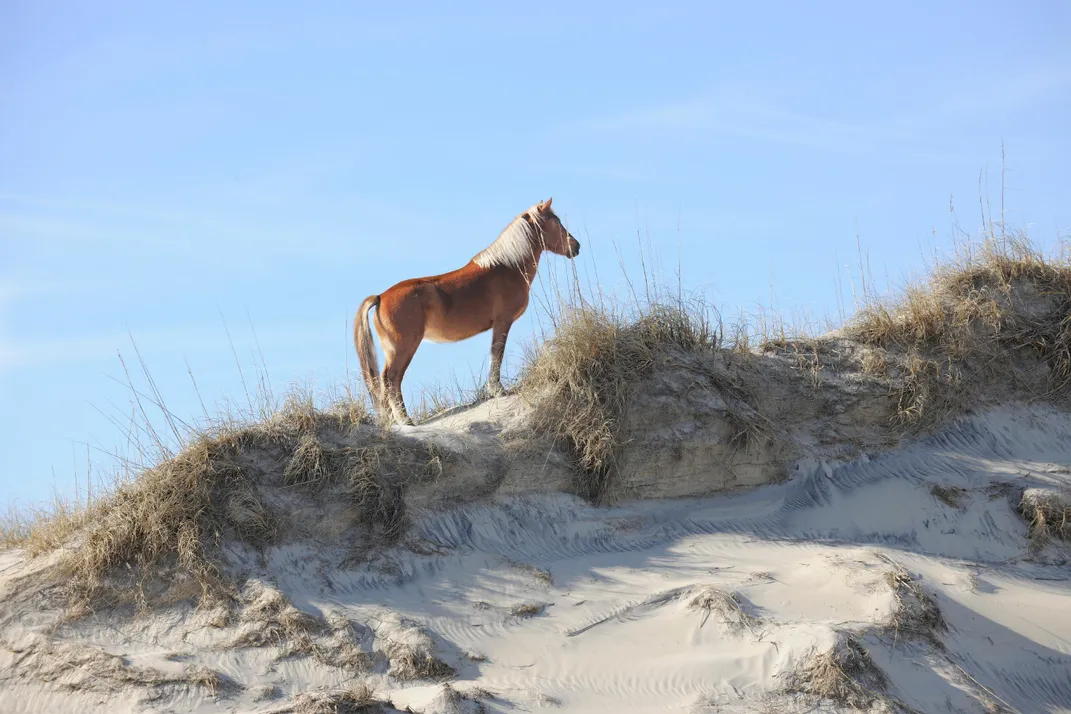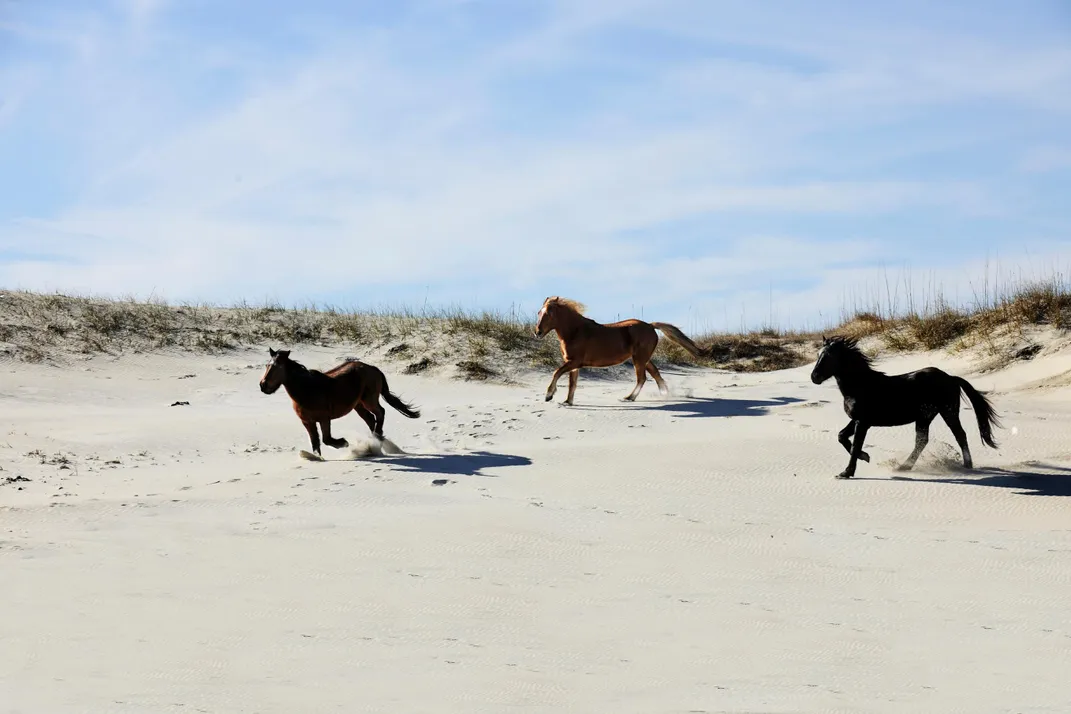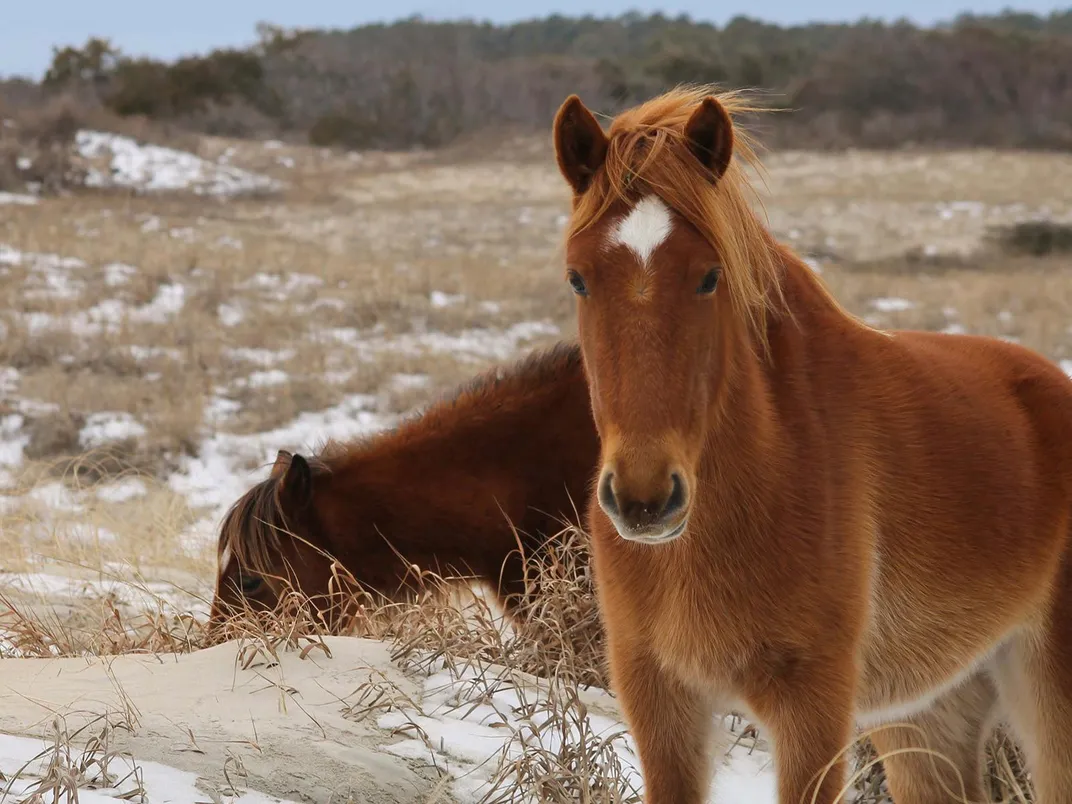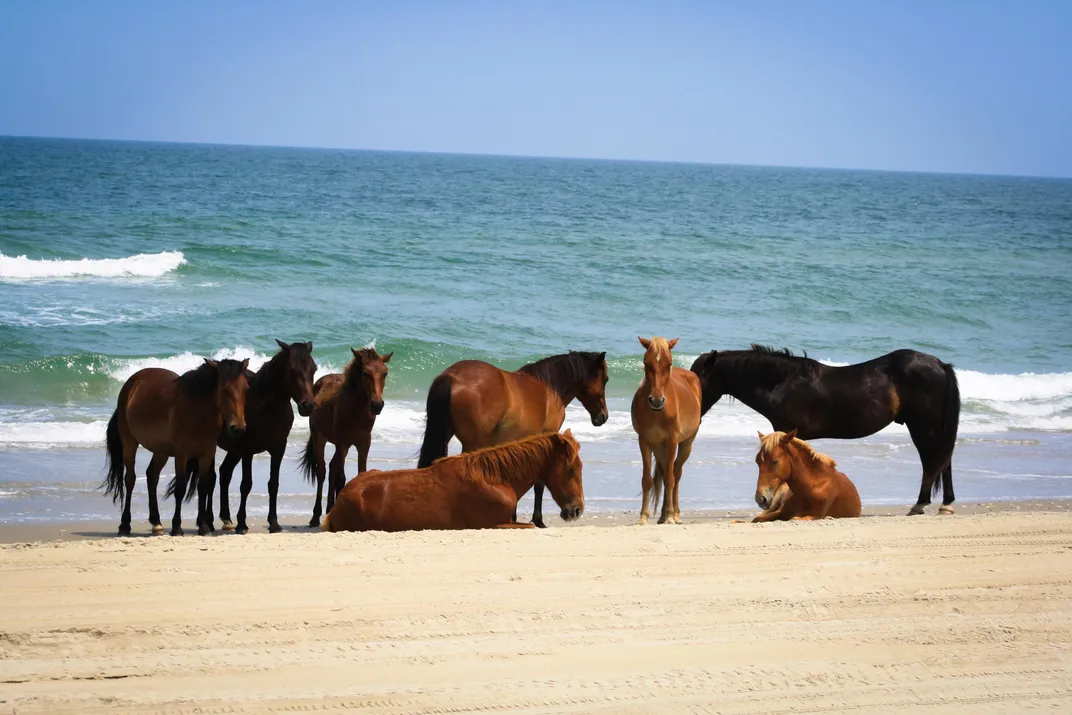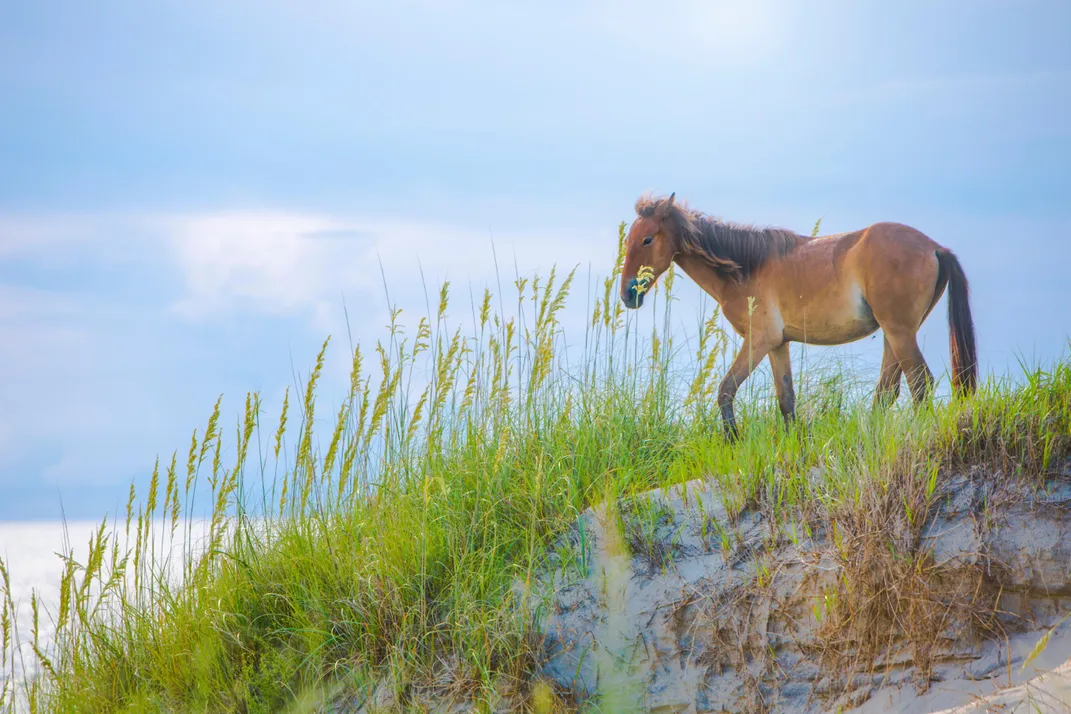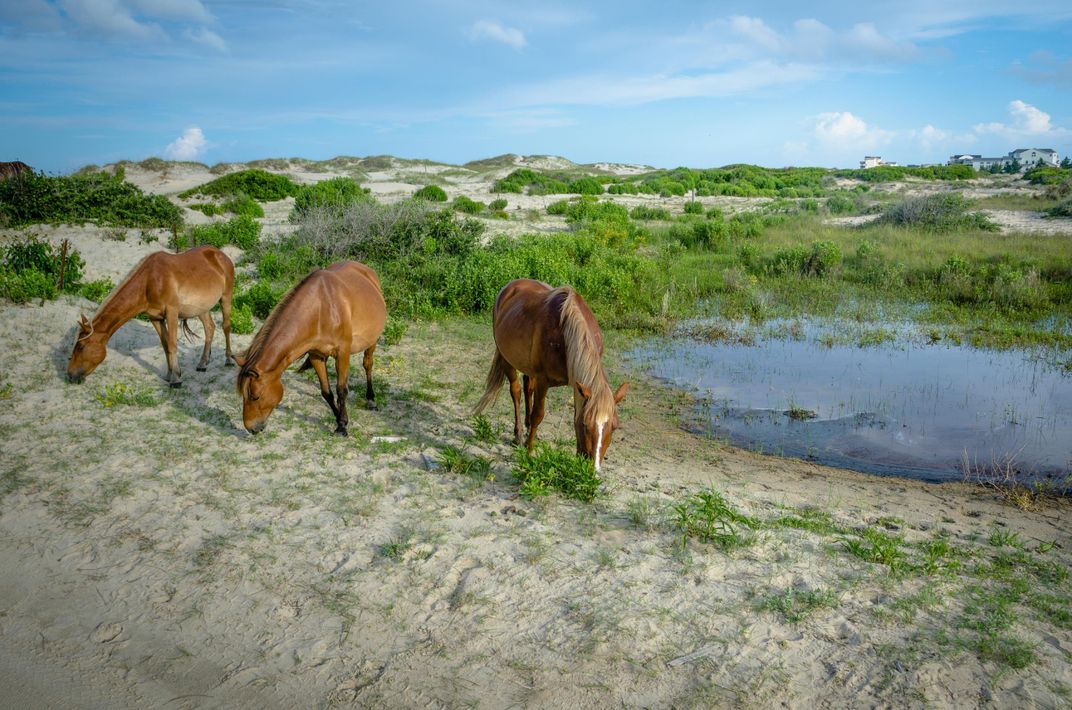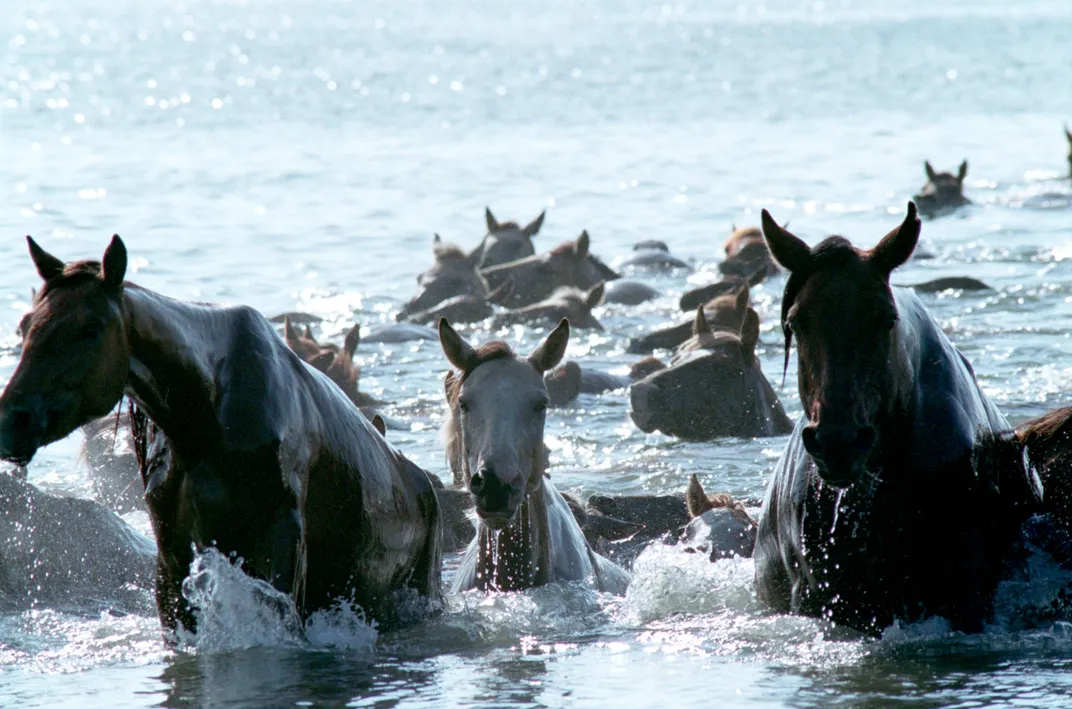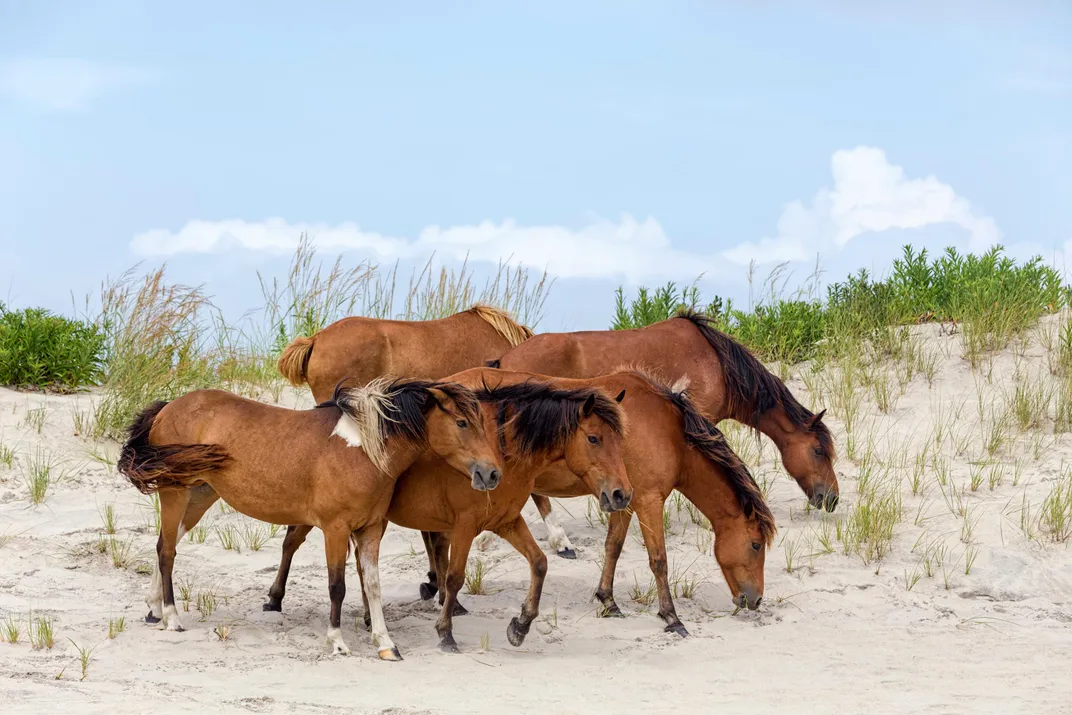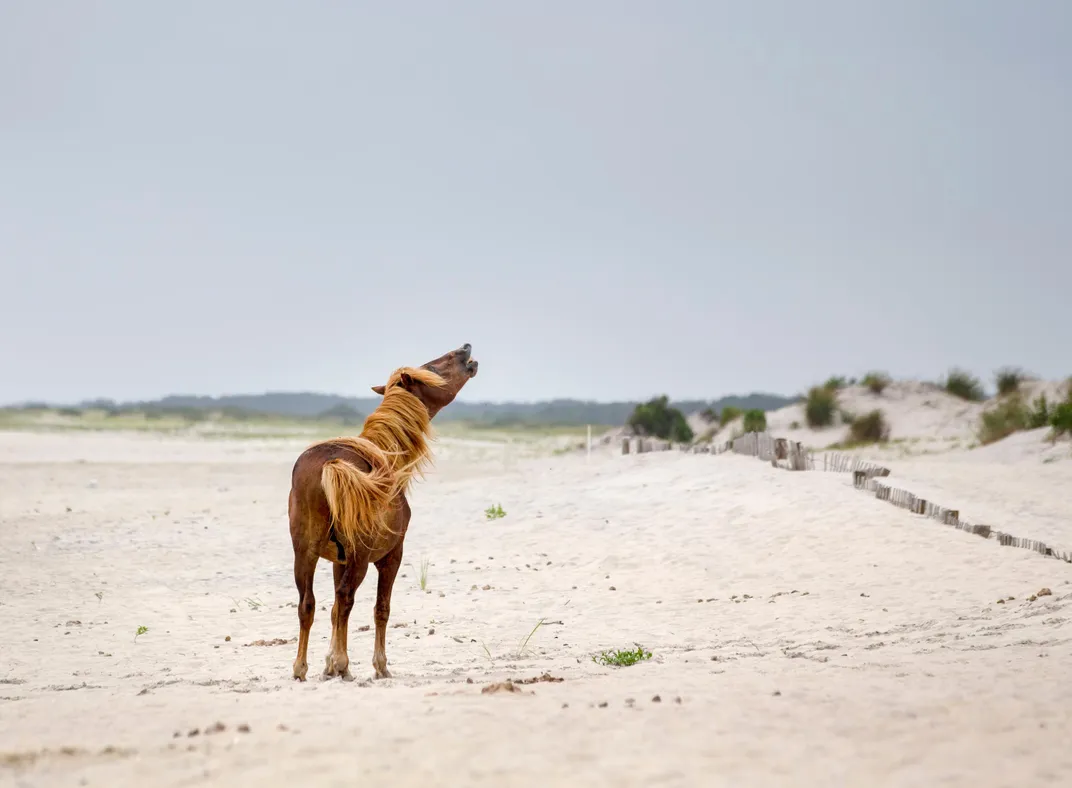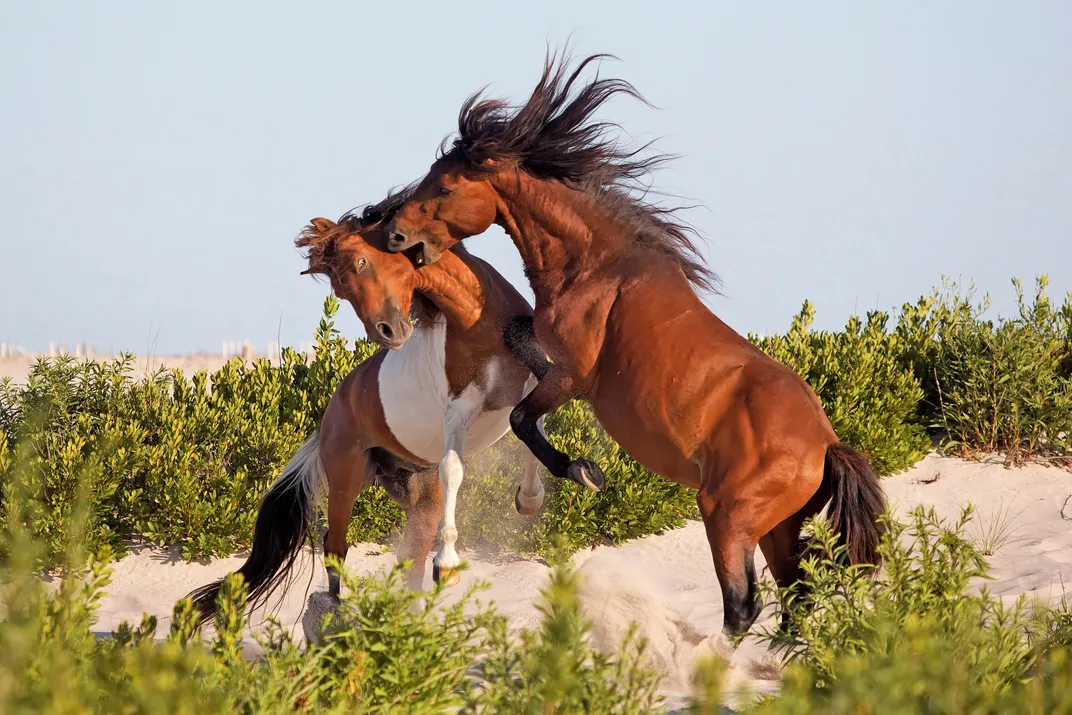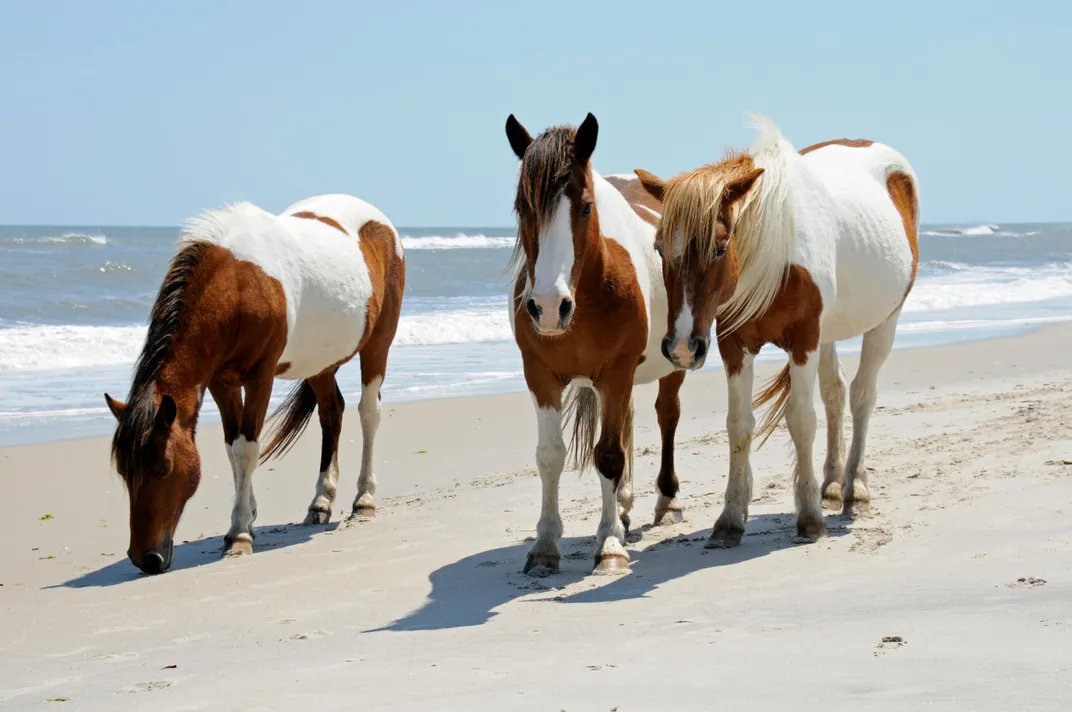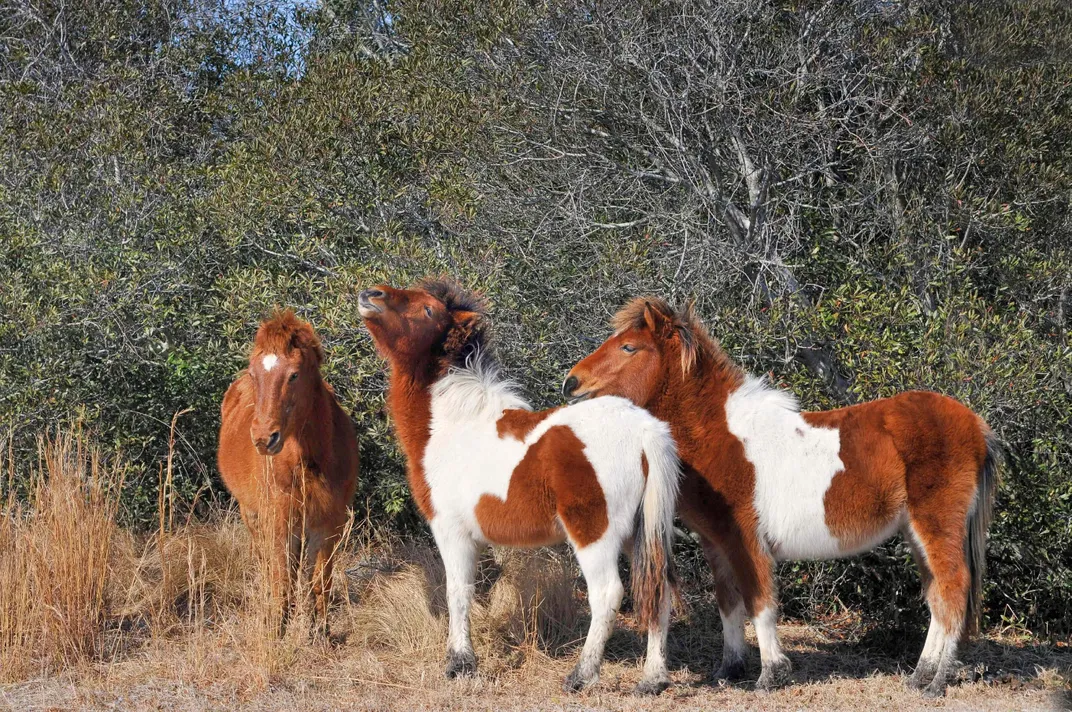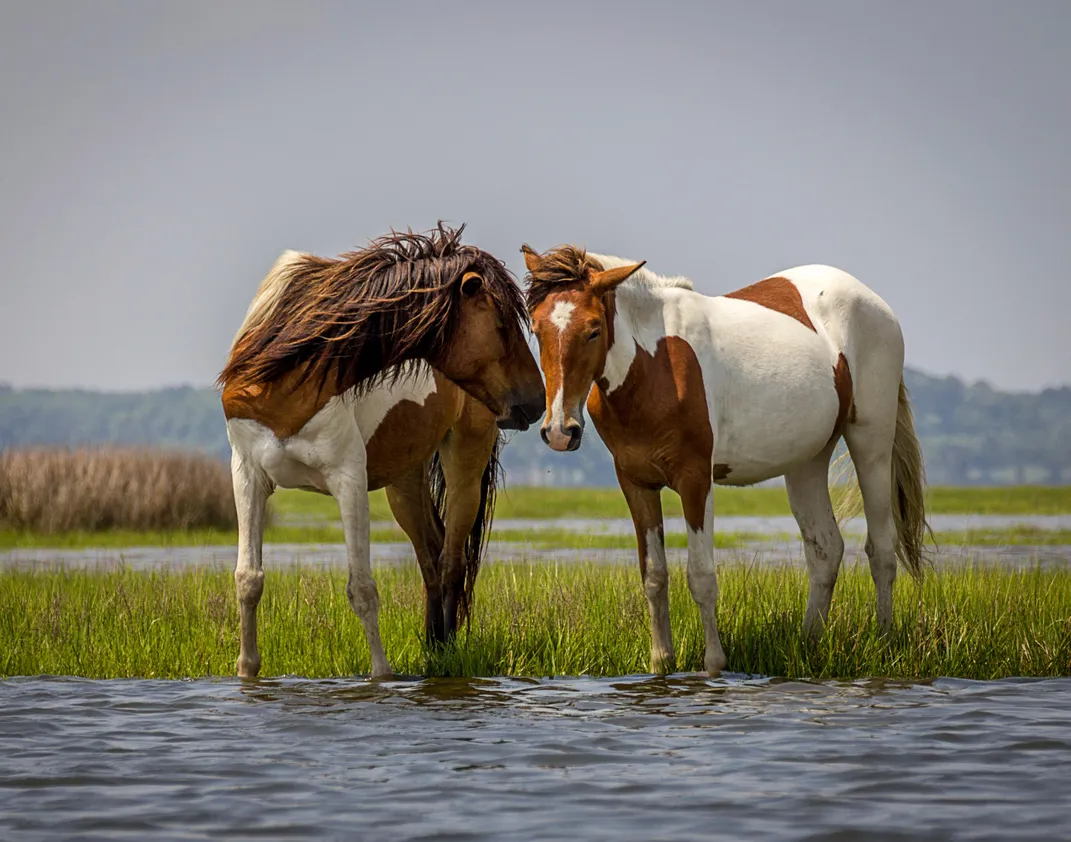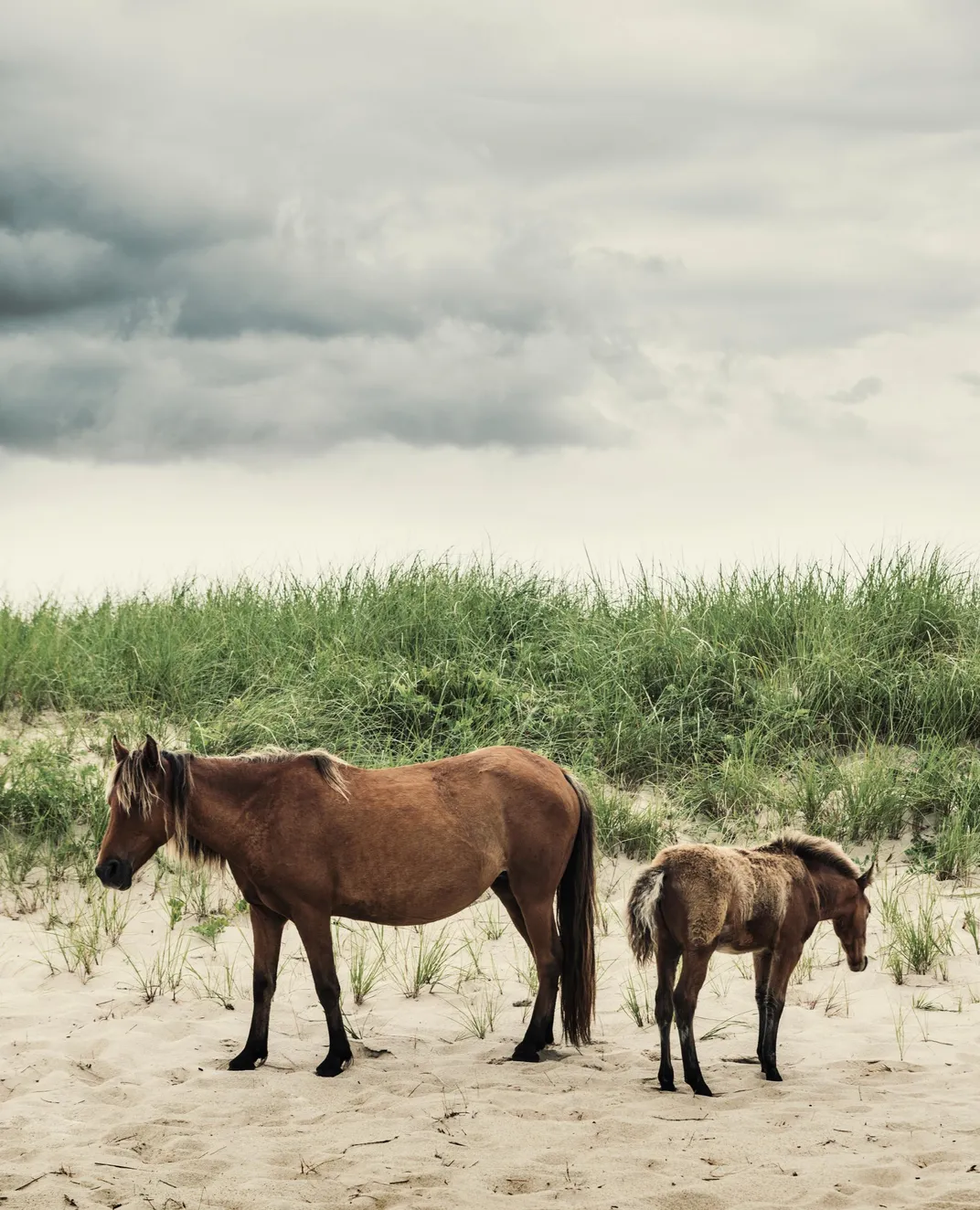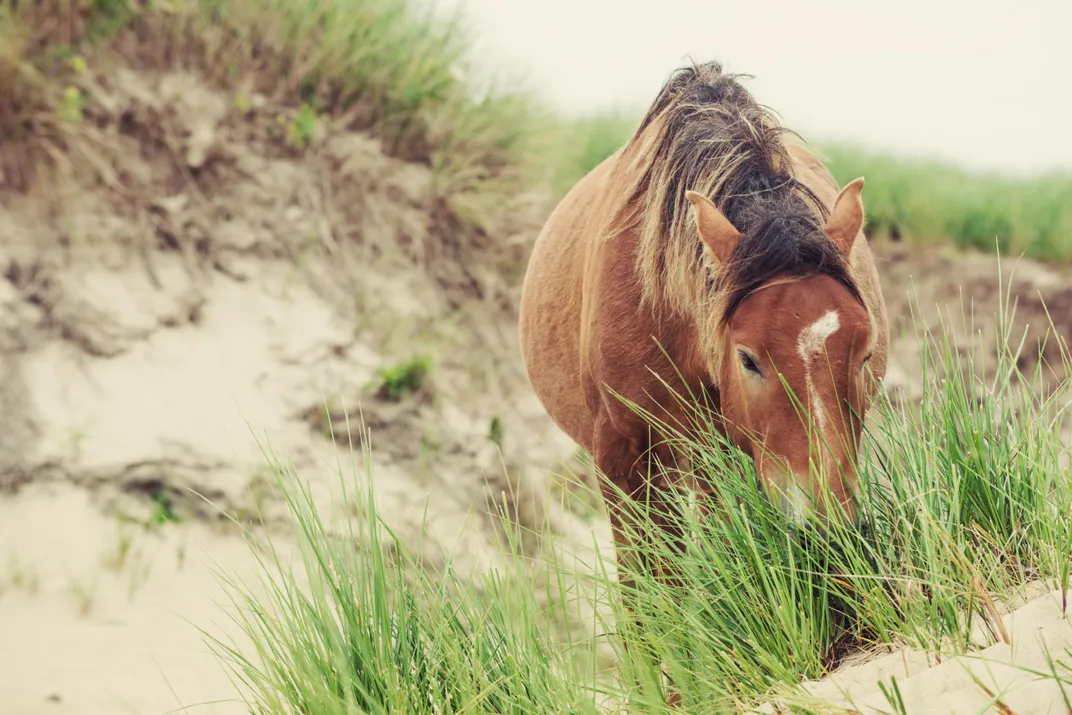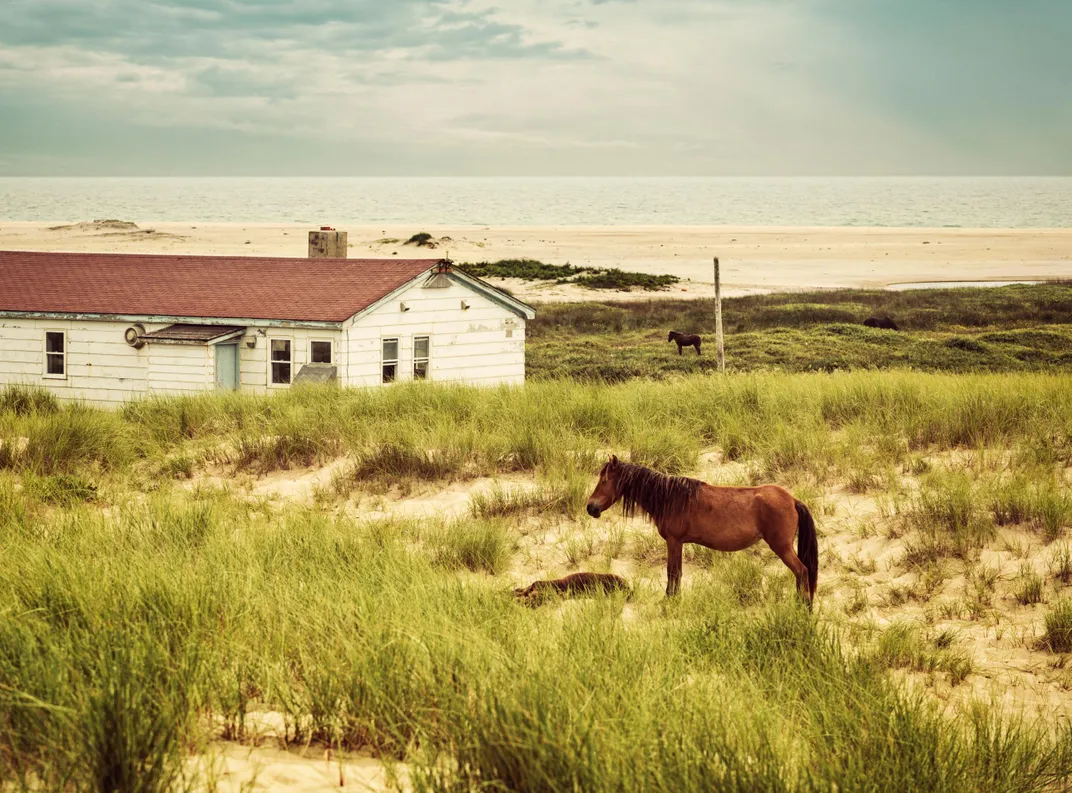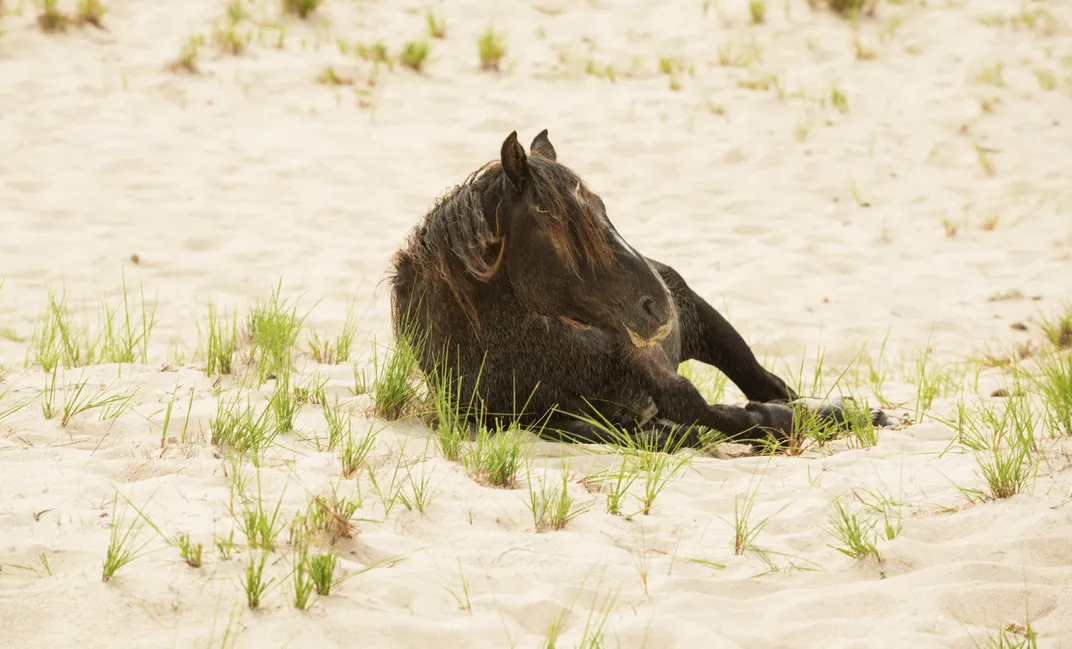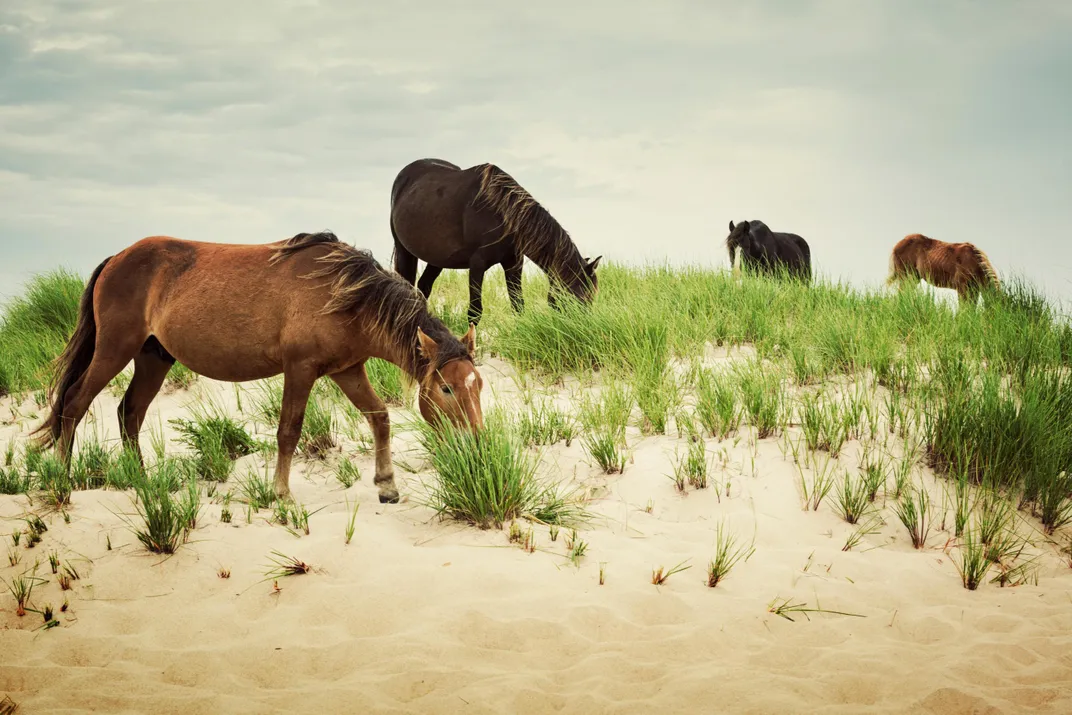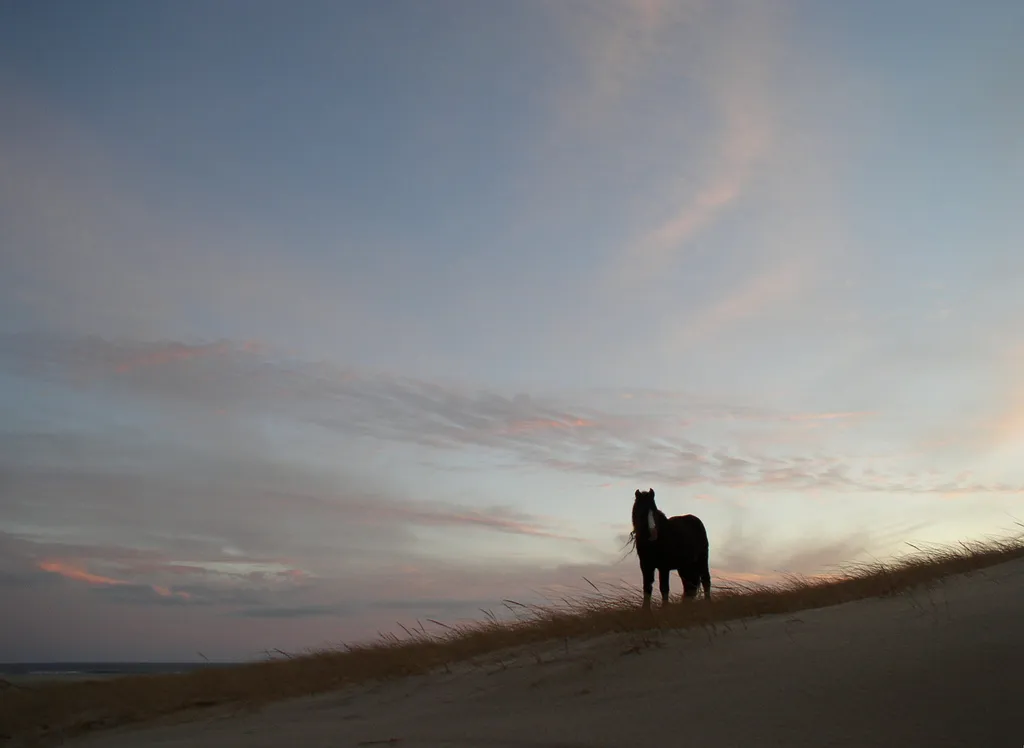The Best Places to See Wild Horses in North America
From Nevada to Nova Scotia, here are the top locations to see these beautiful and majestic creatures
/https://tf-cmsv2-smithsonianmag-media.s3.amazonaws.com/filer/6c/64/6c646d26-6133-4518-bea3-871437b89db1/42-58489052.jpg)
The wild mustang, free from the constraints of a saddle and spurs, roaming the great expanse with a wind-swept mane, has long been a powerful symbol of the American West, particularly in film and literature. Protected by Congress since the mid-20th century (western ranchers, claiming horses took valuable grazing resources away from cattle, began killing off the herds), wild horses of all breeds have a majestic beauty to them that makes them an attraction for animal and nature lovers.
While native horses once lived in North America (they died out over 10,000 years ago), the horses seen today are descendants of the domesticated beasts reintroduced to the continent by Spanish explorers in the 16th and 17th centuries. During the hundreds of years of breeding, trading and warring that followed, many domesticated horses were lost, abandoned or let loose, going on to form wild herds throughout the land, most notably out West. Without any natural predators, the herds swelled in size. Before Congress got involved, passing legislation in 1959 an 1971, the horses were subject to unregulated hunting and even poisoning of their water holes.
Although management efforts have not been without controversy, today, there are approximately 60,000 free-roaming horses in the United States and Canada combined. While the Bureau of Land Management considers the horses to be wild, they more accurately fit the definition of feral, which means they are free-roaming descendants of domesticated horses. Regardless of the label, there is no denying the majestic nature of these beautiful creatures. Preservation societies and government agencies alike encourage the public to visit and view North America’s wild horses, provided it's done from a respectful distance.
Here are some of the best places to see wild horses in North America:
The Virginia Range, Nevada
Nevada is home to nearly half of the nation's free-roaming horse population. Many of those horses are part of the Virginia Range herd, which occupies a region in the western part of the state.
The herd is often referred to as “Annie’s Horses” because of the decades-long crusade of “Wild Horse Annie” (born Velma Johnston) to protect these and other free-roaming horses across the nation. Johnston originally hailed from Nevada, and these were the horses that inspired her campaign. The 1959 “Wild Horse Annie Act” (P.L. 86-234) was named after her.
Today, the best way to see these horses is to hike the trails east of Reno and find a nearby watering hole.
Theodore Roosevelt National Park, North Dakota
The mustang is often used as a living and breathing symbol of the American West. That symbolism is on full display at the 70,467-acre Theodore Roosevelt National Park, home to 100-200 free-roaming horses, which can be seen grazing and galloping across the Dakota badlands.
The best time to see the horses is during the summer, when the young are still part of their familial herds. The park reccomends finding a high point, such as Painted Canyon Overlook or Buck Hill, to better observe the horses. The park also says to look for "stud piles"—fresh manure that stallions use to mark their territory.
In recent years, disagreement has arisen over the best way to protect these horses and the lands where they graze. While the culling of feral horses was once a common practice to keep numbers to manageable levels, contraceptive programs are now being studied and researched as a more humane way of limiting the wild horse population at the park.
The Pryor Mountains, Montana & Wyoming
The Pryor Mountains are home to about 160 free-roaming horses, who mostly live in the northeast region of the mountain region near Bighorn Canyon. Many of the horses display distinctive markings—a long dorsal stripe along the back and "zebra-like" coloration on their legs—and are smaller than the average wild horse.
The Pryor Mountain Wild Mustang Center believes that the animals are descendents of colonial Spanish horses brought to the area by Native American tribes in the 17th and 18th centuries. Over the years, genetic studies have been done on the horses, and results have shown consistency with Spanish genetic traits.
The 38,000 acres on which the horses roam are a combination of Forest Service, Bureau of Land Management and National Park Service lands. In 1968, after public pressure, Interior Secretary Stewart Udall set aside 31,000 acres as protected public range for the horses. Several years later, additional acreage was given under “The Wild Free-Roaming Horses and Burros Act.” Today, the horses can be seen grazing along Highway 37, but it's worth paying a visit to the Pryor Mountain Wild Mustang Center before venturing out. There, the center promises to provide updated information about the exact location of herds.
Outer Banks, North Carolina
There was a time when the wild horses of North Carolina's Outer Banks numbered in the thousands, but the recent increase in popularity of this beach resort region has made a dramatic impact. Today, some fear that these horses (especially the Corolla herd, which has only 60 animals left) may not be around much longer.
The horses are believed to be descendants of those that accompanied Spanish explorers in the 16th and 17th centuries. Unable or unwilling to bring the horses back with them to Spain, the explorers left them behind on the beaches of North Carolina. The horse population initially exploded, but in the late 20th century numbers dwindled after roads and vacation rentals were built in earnest. Human intervention, destruction of habitat and car traffic all contribution to the declining populations.
Some of the herds lack genetic diversity due to high levels of inbreeding, which imperils their surivival. While the horses of Shackleford Banks in the southern region of the Outer Banks have ample genetic diversity, the same can’t be said of the Corolla herd in the north. According to Executive Director of the Corolla Wild Horse Fund Karen McCalpin, isolation has caused the Corolla herd to lack genetic diversity, and inbreeding has eroded their numbers. Survival is not guaranteed. “We are in the process of trying to introduce horses from the Shackleford Banks herd to hopefully increase the genetic diversity,” says McCalpin.
The horses can be seen most safely (for both human and horse) at wildlife sanctuaries, but they are occasionally spotted in areas with higher human traffic as well. They are often seen near saltwater cordgrass and digging for fresh water. Visitors are asked to stay at least fifty feet away from the horses and to always give them the right of way.
Assateague Island, Virginia & Maryland
The horses of Assateague first received worldwide attention thanks to Marguerite Henry’s 1947 Newbery Medal-winning book Misty of Chincoteague. Beautiful and tough, these horses have since become immensely popular and a huge tourist draw for the surrounding areas.
While over 300 ponies wander the island in total, they are actually divided up into two different herds. The Maryland horses, which roam the Assateague Island National Seashore, are looked after by the National Park Service. The Virginia horses, which graze at Chincoteague National Wildlife Refuge, are cared for by the Chincoteague Volunteer Fire Company. The Chincoteague National Wildlife Refuge restricts the herd to 150 adult animals in order to protect the local ecosystem. This restriction has led to the annual late July tradition of the Chincoteague Pony Swim, when the herd is rounded up to swim from Assateague to nearby Chincoteague Island. The next day, young foals are auctioned off to ensure the number stays at 150, with the proceeds donated to the Chincoteague Volunteer Fire Company. 2015 marked the 90th anniversary of this tradition.
Sable Island, Nova Scotia, Canada
About 100 miles off the Nova Scotia coast lies the remote Sable Island. The island is sometimes called the “Graveyard of the Atlantic” due to the number of shipwrecks that have occurred along its notoriously dangerous shores. It is also famous for the several hundred horses that roam the expansive sandy landscape.
While the exact origin of the horses is still a mystery, scientists theorize that they are descendents of ones seized by the British when they expelled the Acadians in the mid-18th century. Due to harsh conditions, many of the other animals died out. But the horses survived, roaming free along the sand dunes of Sable Island. Today, there is some controversy around whether the horses should be allowed to stay there. While they are not native, there are arguments that both the ecosystem and horses have adapted to one another.
In 2013, Sable Island officially became a Canadian National Park, although the area isn’t particularly accessible—it can only be reached by plane or ship. Recently, tour companies have started taking visitors there, and while trips are expensive, visitors will be rewarded by views of unique plant and bird life, pristine beaches, breeding gray seals and the one of the most remote wild horse colonies in North America.


